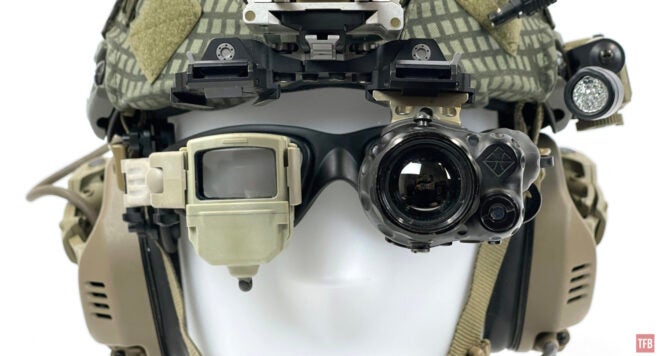Good evening everyone and welcome back to another Friday Night Lights. Last week I wrote about the PAS-28 MRTB, a medium range thermal bi-ocular. Well today is tangentially related, it is the BAE Oasys RED-I (Remote Eye Display – Imager). A monocle HUD for remote viewing thermal images.
Thermal @ TFB:
- Friday Night Lights: Trijicon/BAE OASYS UTCXII – Long Range Thermal Clip-On
- Friday Night Lights: BAE SKEETIRL – Thermal Binos And SKEETIRCOTI
- Friday Night Lights: Oasys Universal Thermal Binocular (UTB)
BAE RED-I Thermal Monocle
The future was over a decade ago. BAE Systems was awarded a contract for head-mounted displays that work with thermal weapon sights as well as other mission systems by acting as a private viewing display. That system was the RED-I.

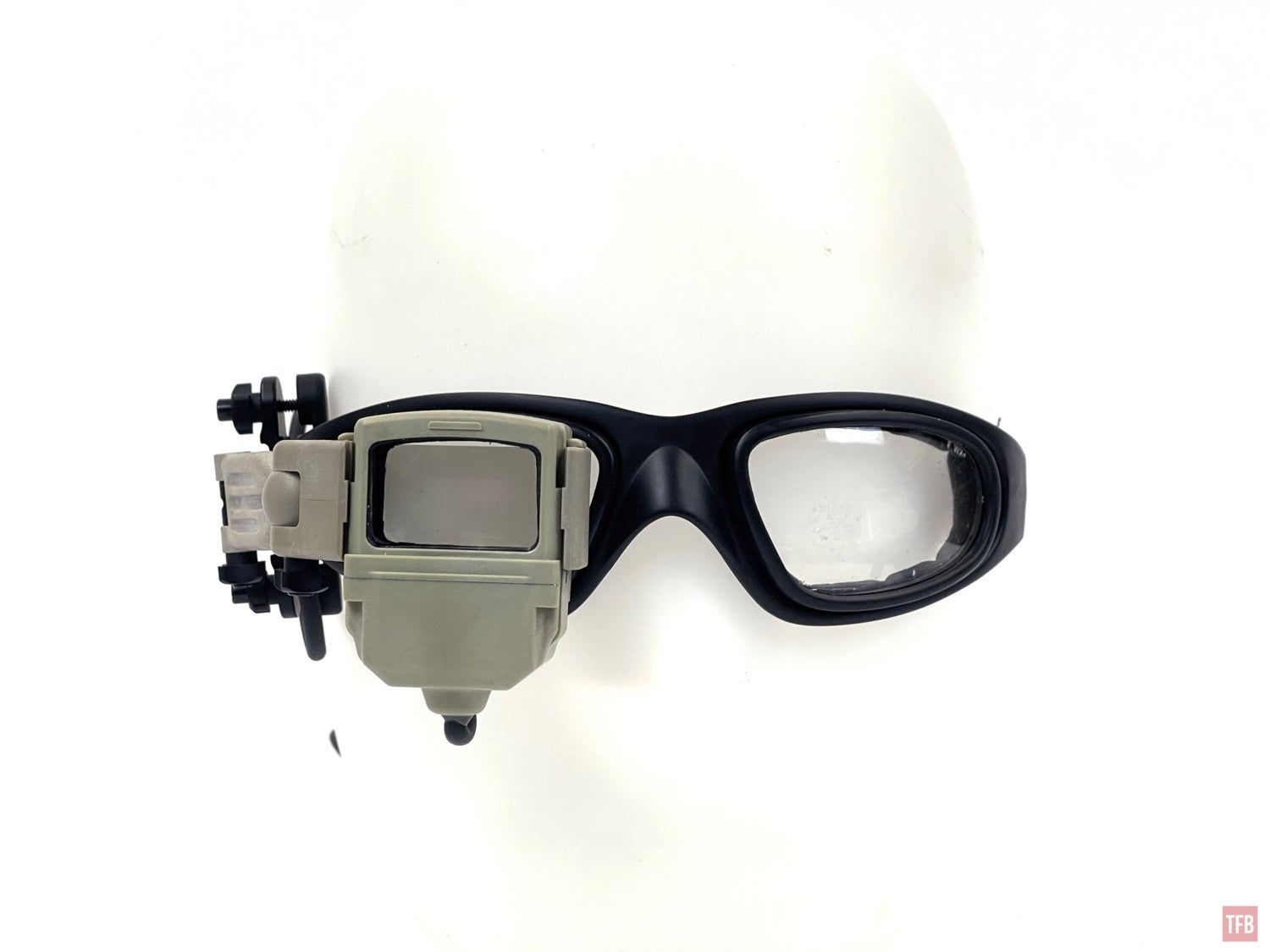
Did you notice something between the two images above? The RED-I is a see-through display, but for operational reasons, there is a snap-on light-blocking plate.
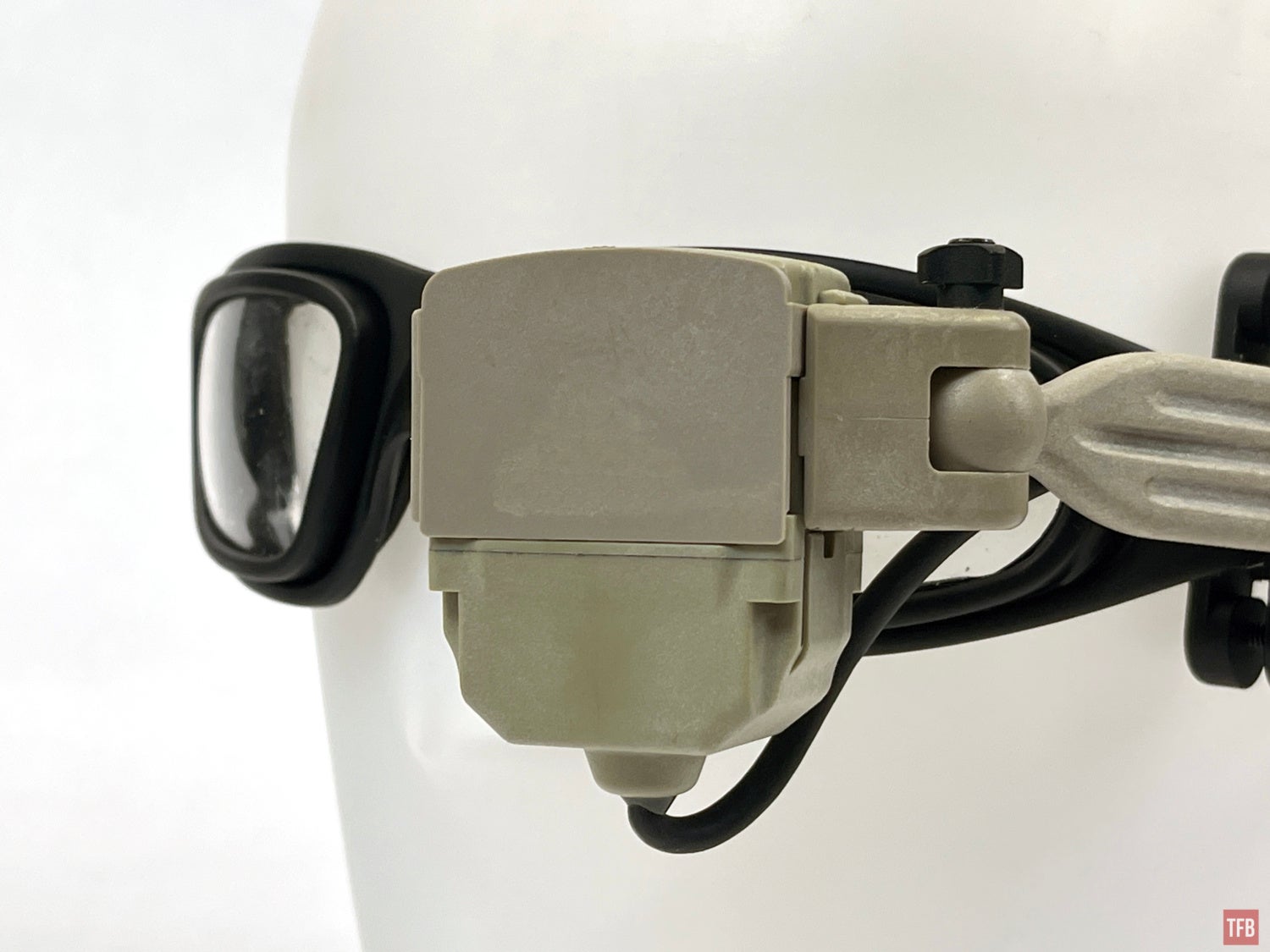
The light-blocking cover plate slides into slots molded into the RED-I mounting arm and a side plate on the other side of the eyepiece.

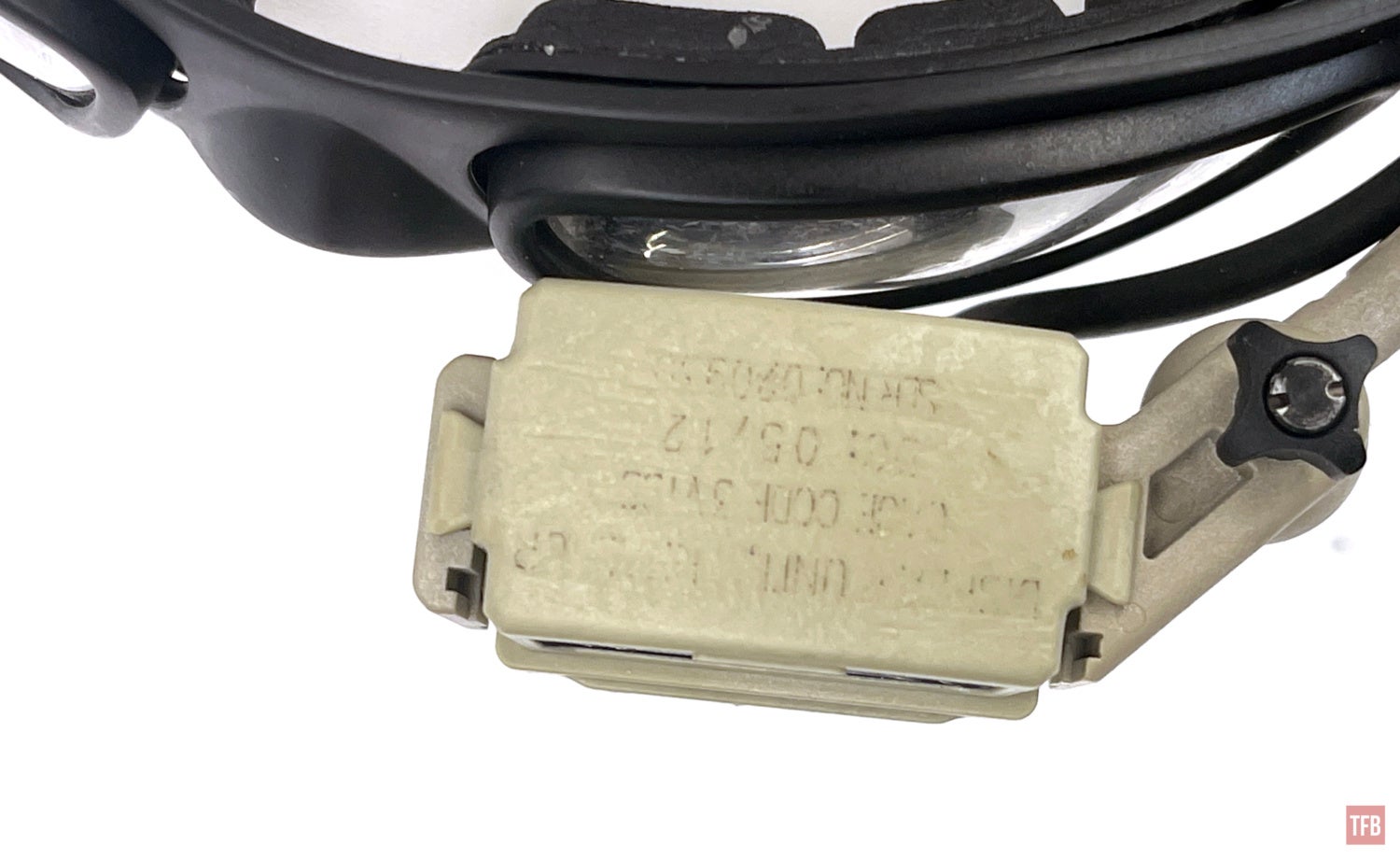
On the opposite side is a small side plate that has the same slot mirrored so it holds onto the light-blocking cover plate.

That small side plate and the mounting arm slide onto dovetails. See the inverted U-shaped cut below it? That is the detent that keeps the side plate and mounting arm from sliding off the RED-I monocle.
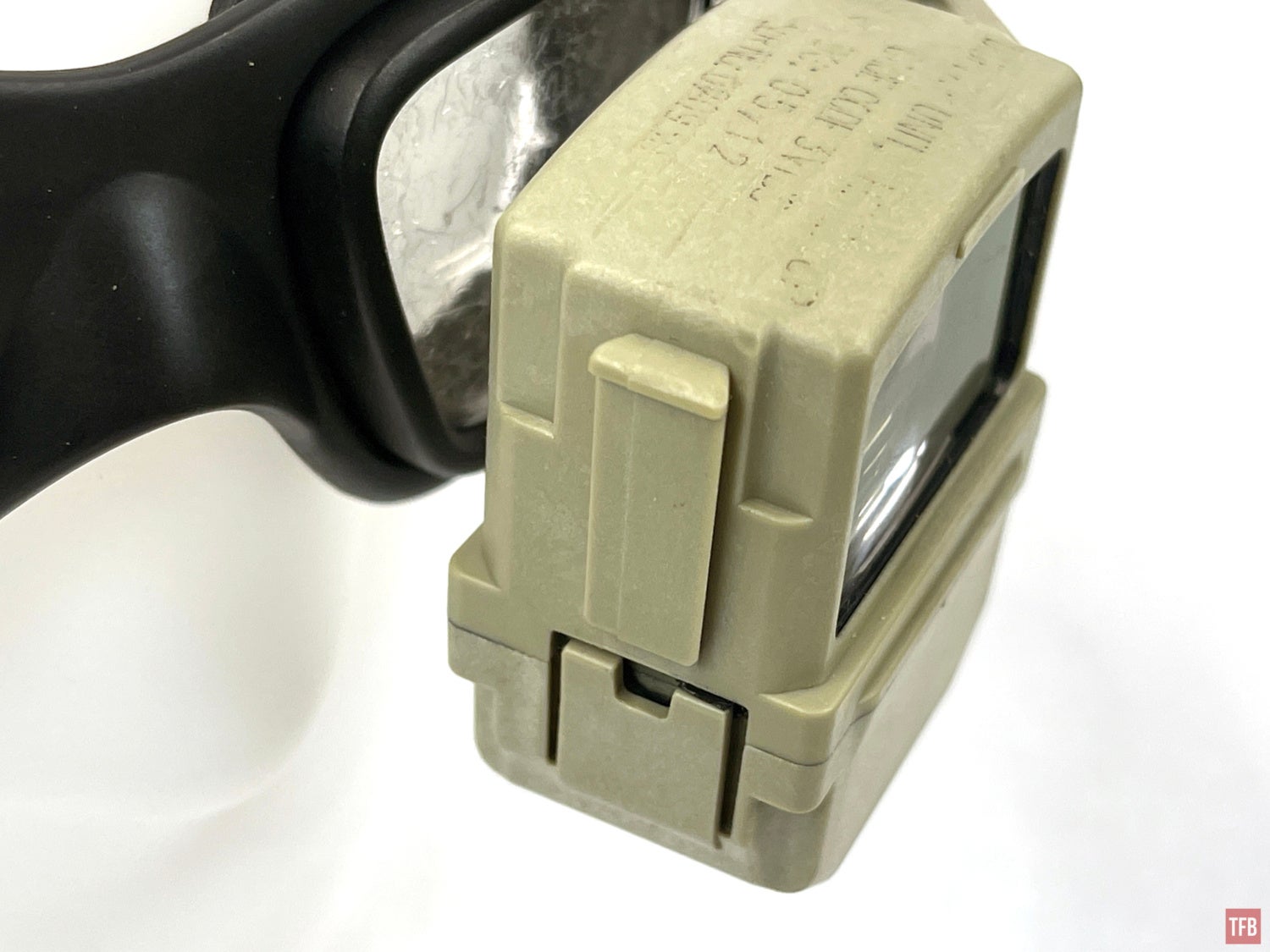
This allows the RED-I head-mounted display to be positioned over the left or right eye. Just slide the eyepiece off the mounting arm and remote the side plate. Then you switch the mounting arm to the other side of your goggles/glasses. The mounting arm is made up of a black metal clamp that attaches to the side of Wiley X SG-1 goggles. You can attach it to other glasses as long as the earpiece is flat and you have a head strap. The RED-I adds a bit of weight to the glasses and it is easier for them to slide down.

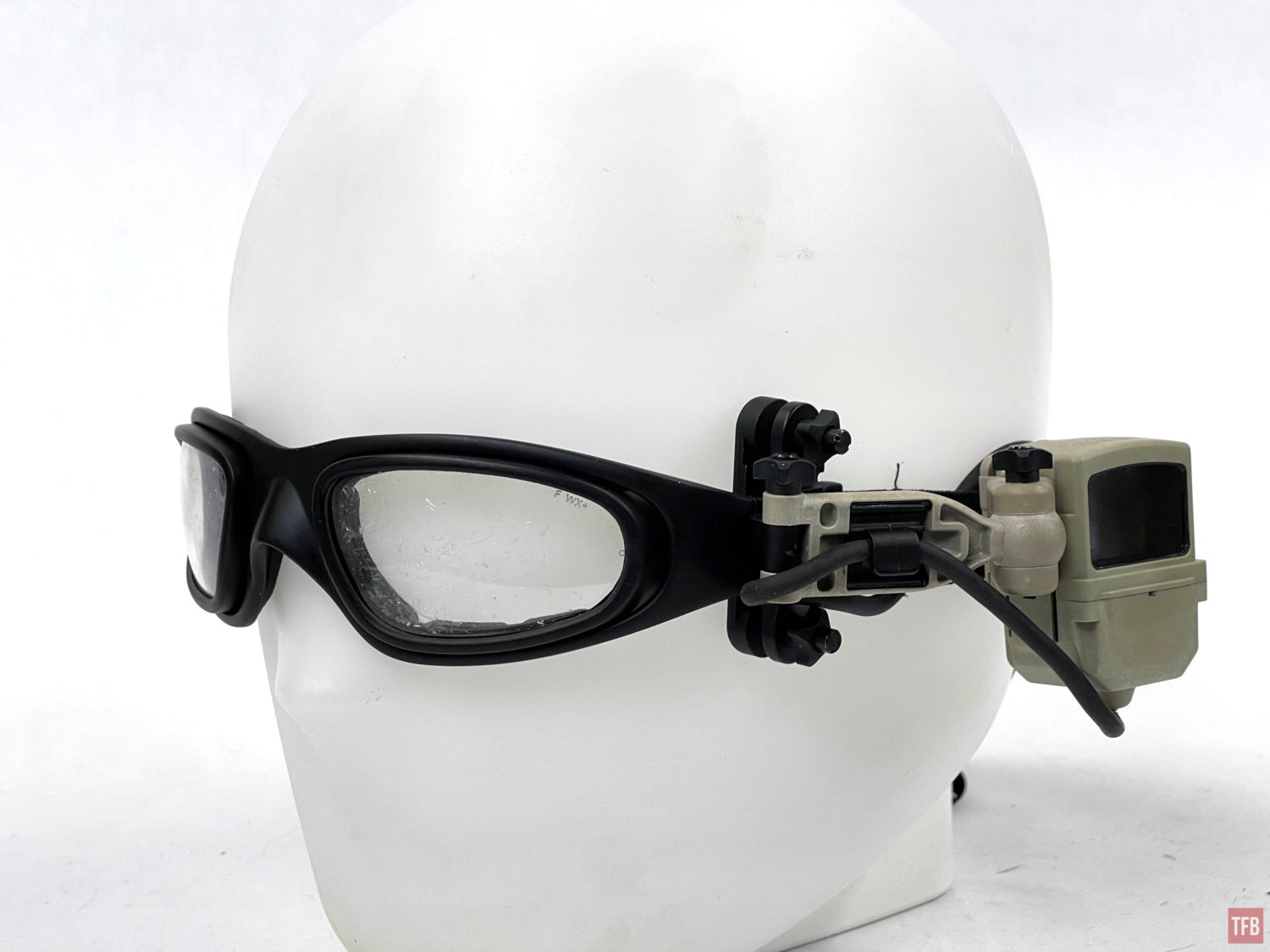
The RED-I mounting arm has a hinged bar that tapers to a ball joint. That ball has a hole molded vertically through it with a threaded bolt and nut to adjust the tension on the ball/socket joint. The tension bolt also acts as a range limiter. The eyepiece range is limited in that axis but you can rotate around the equator of the ball joint. The RED-I has a dovetail socket that grabs the ball jount. There are thumbwheel adjustment knobs to tighten and increase the friction of the joints.
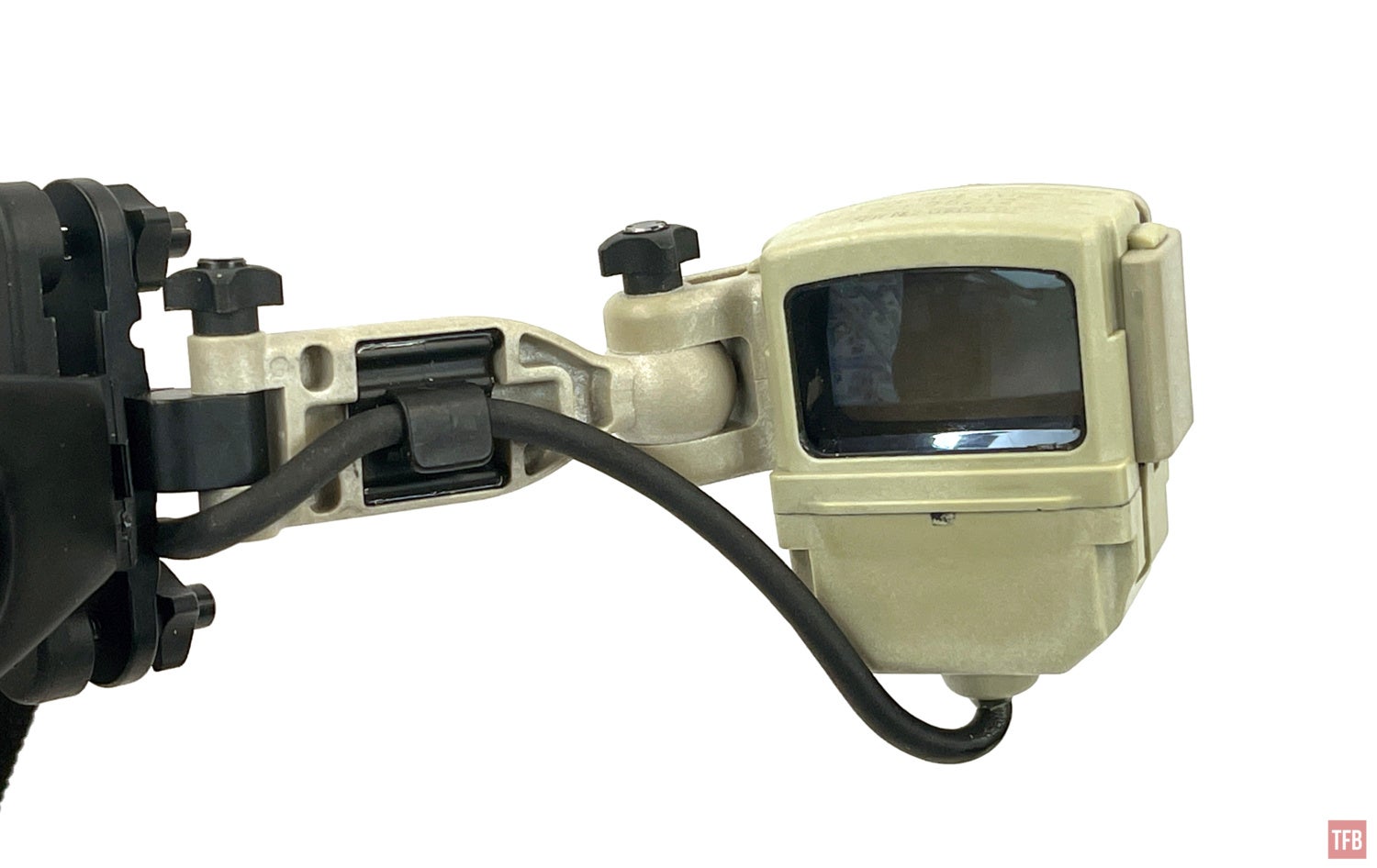
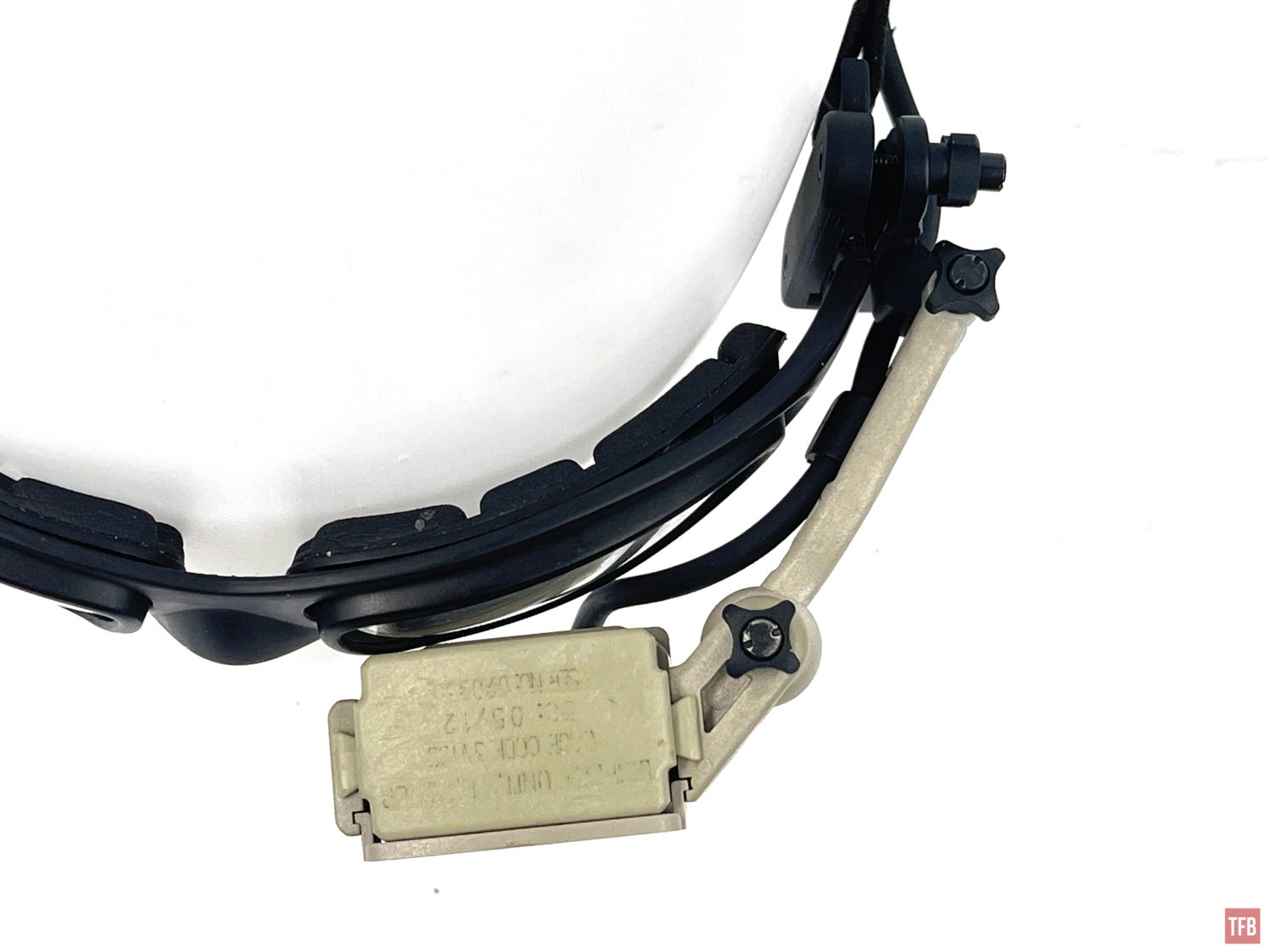
The RED-I mounting arm can swing back 180º to store the display out of the way.

A tactical monocle that swings out of the way? Reminds me of Lord Krill from The Last Starfighter.

Photo from movie-monster.fandom.com
Controlling The RED-I
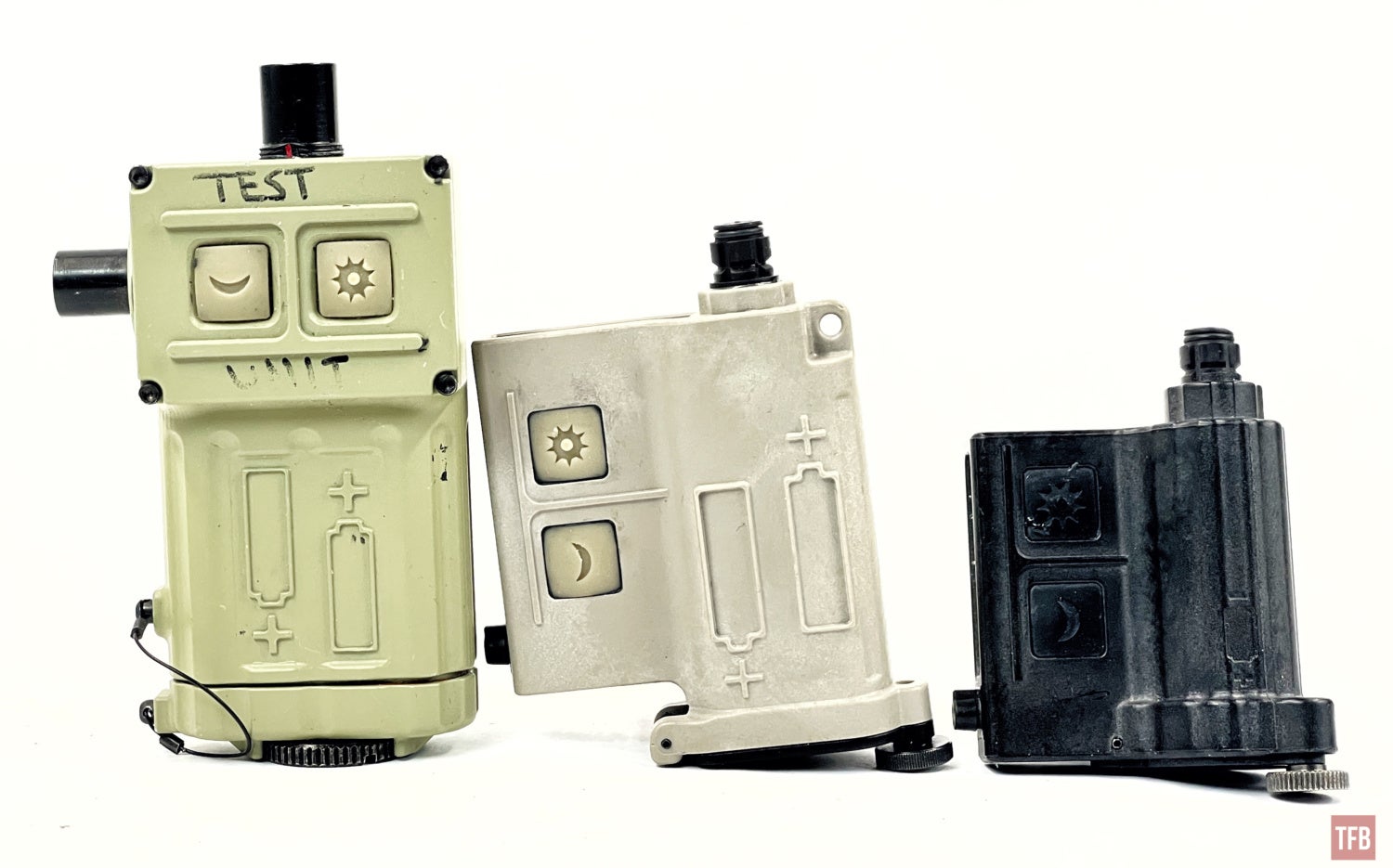
There are three variants of the controller for the RED-I. The one on the left is the older variant. It is machined aluminum while the other two are some sort of glass-filed nylon, possibly Ultem. The RED-I display monocle plugs into the top. Along the side is a port sticking out the side for analog video RS-170 to be fed into the controller which then displays it via the RED-I.
The older controller and the tan one in the middle are powered by a pair of AA batteries per device. The older controller has female ports on both sides while the newer controllers have male ports.
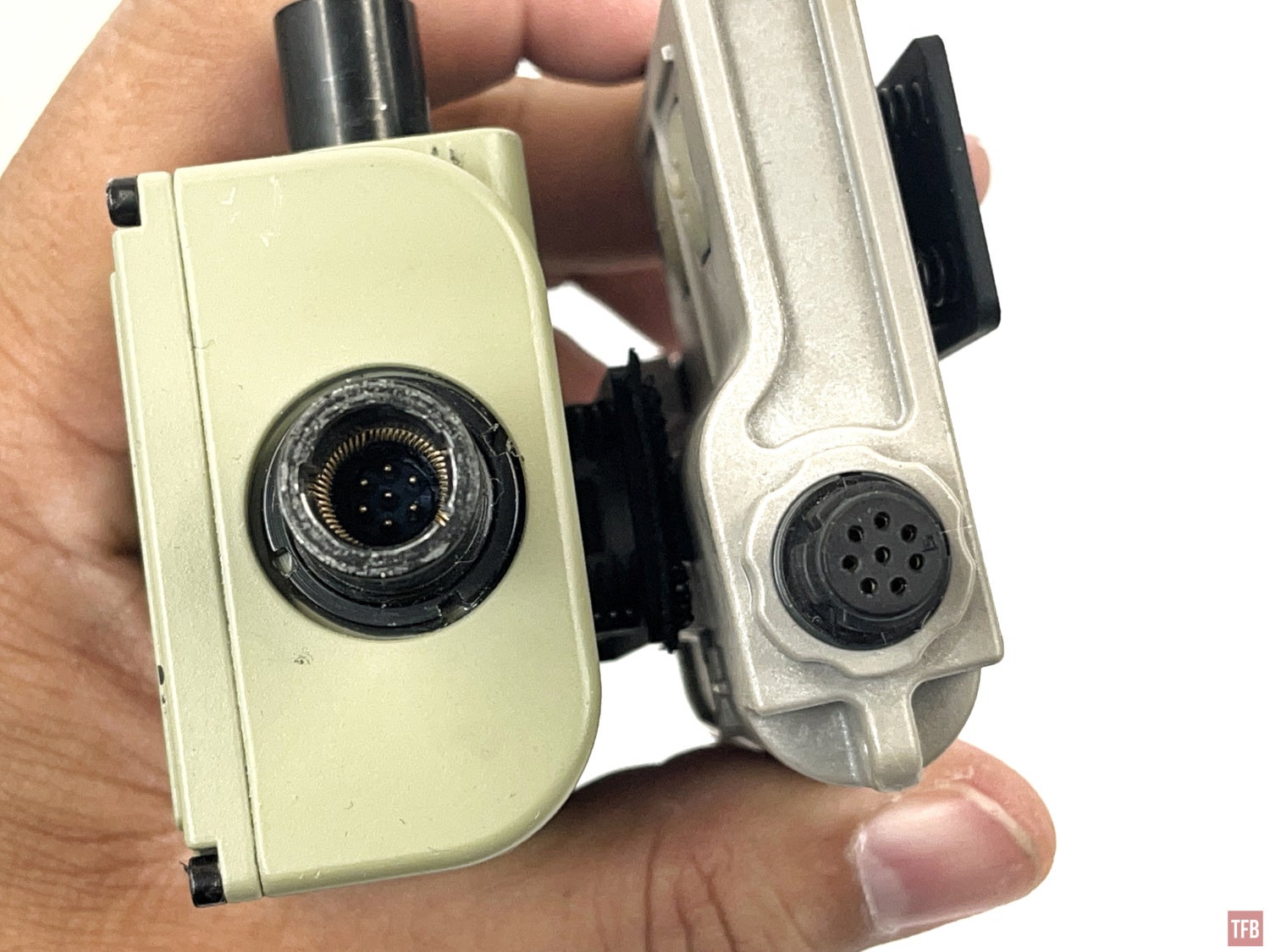
The side port is where you plug your analog video device cable. The RED-I comes with a cable that has a BNC connector on the end.
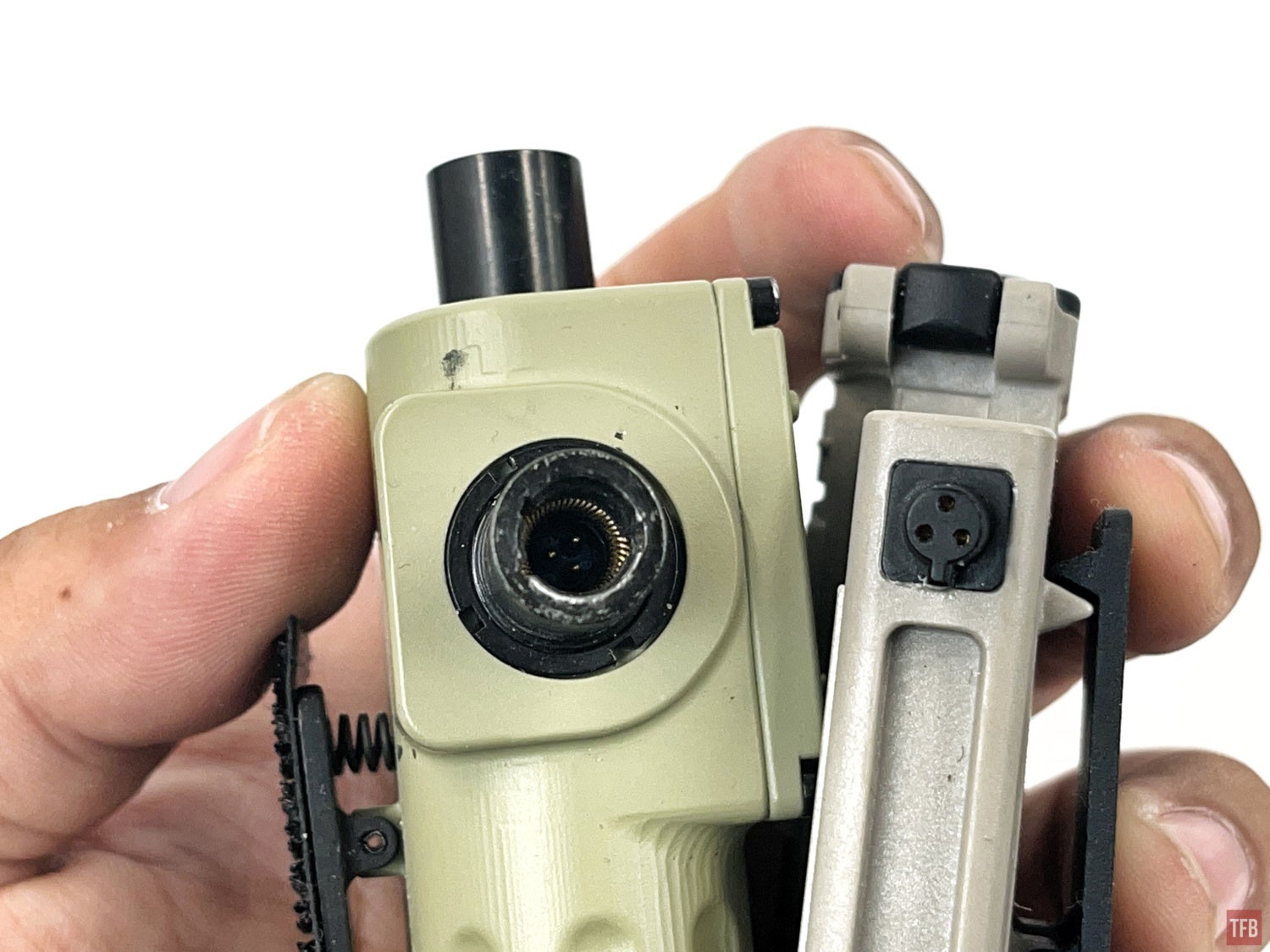
The third variant controller is made of the same material. It is smaller and uses CR123 rather than two AA batteries.
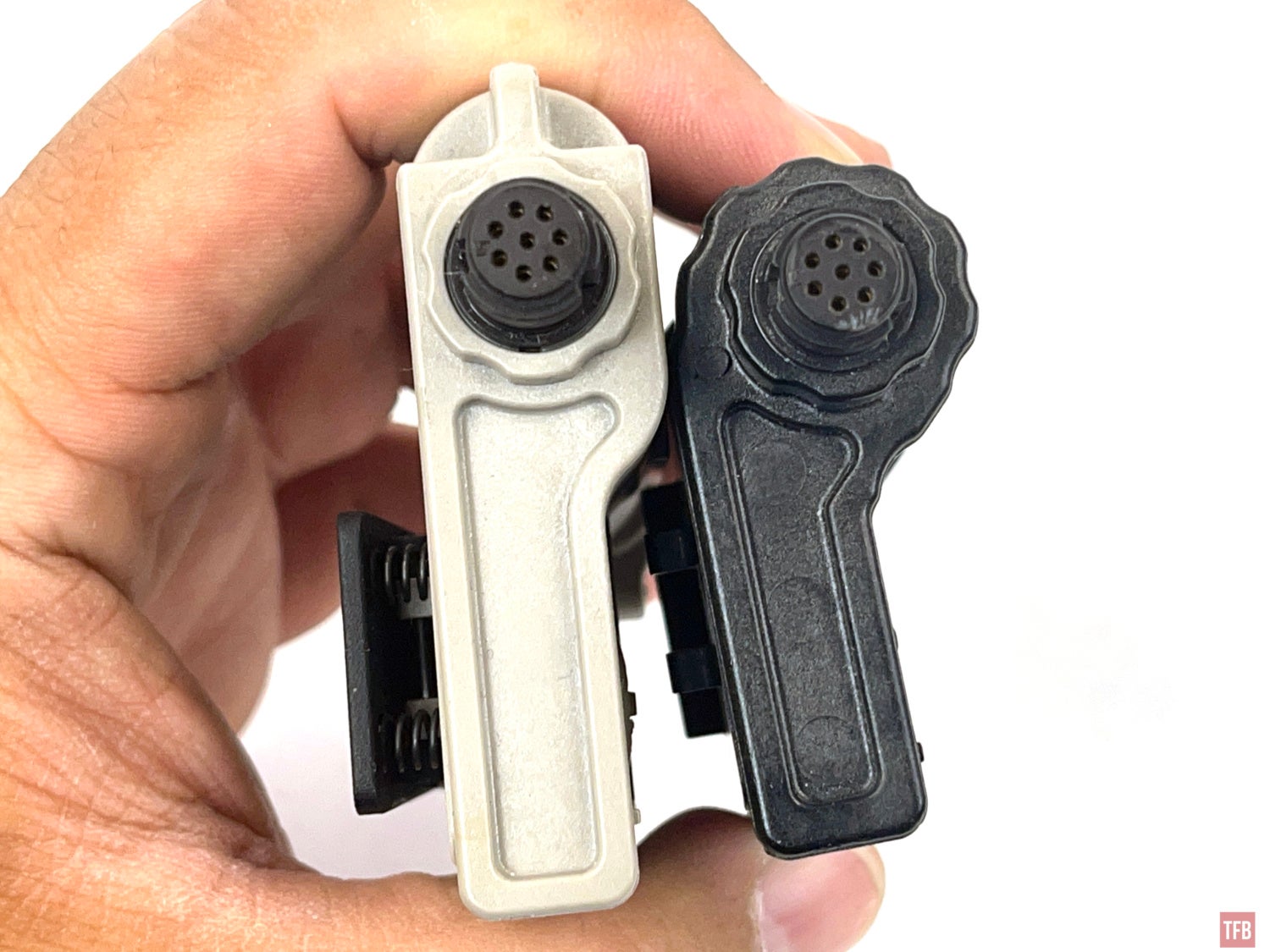

Using RED-I

The RED-I came out over a decade ago so it is a bit newer than another system, Landwarrior.

Photo by Getty Images
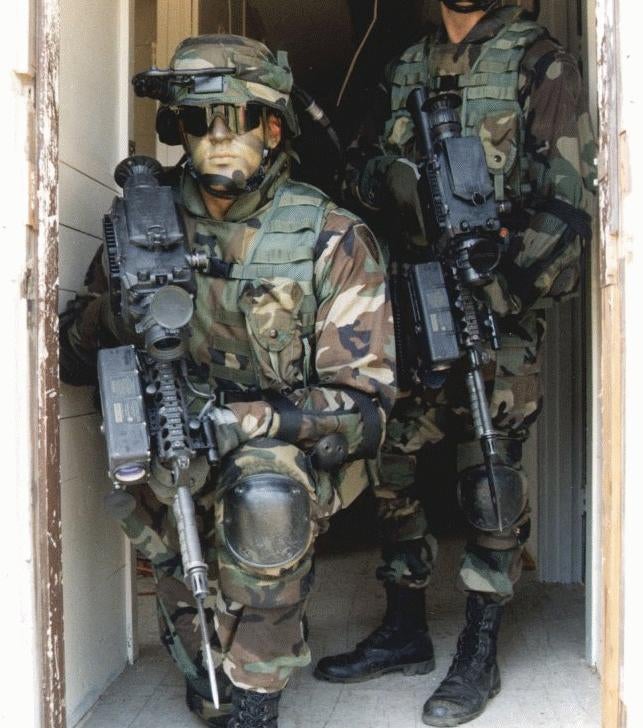
Photo from MAN.FAS.org
Land Warrior is a blip in military history where they tried to have remote viewing so you can shoot around barricades and expose a lot less of yourself.

We saw something similar in Tom Clancy’s Ghost Recon Advanced Warfighter.
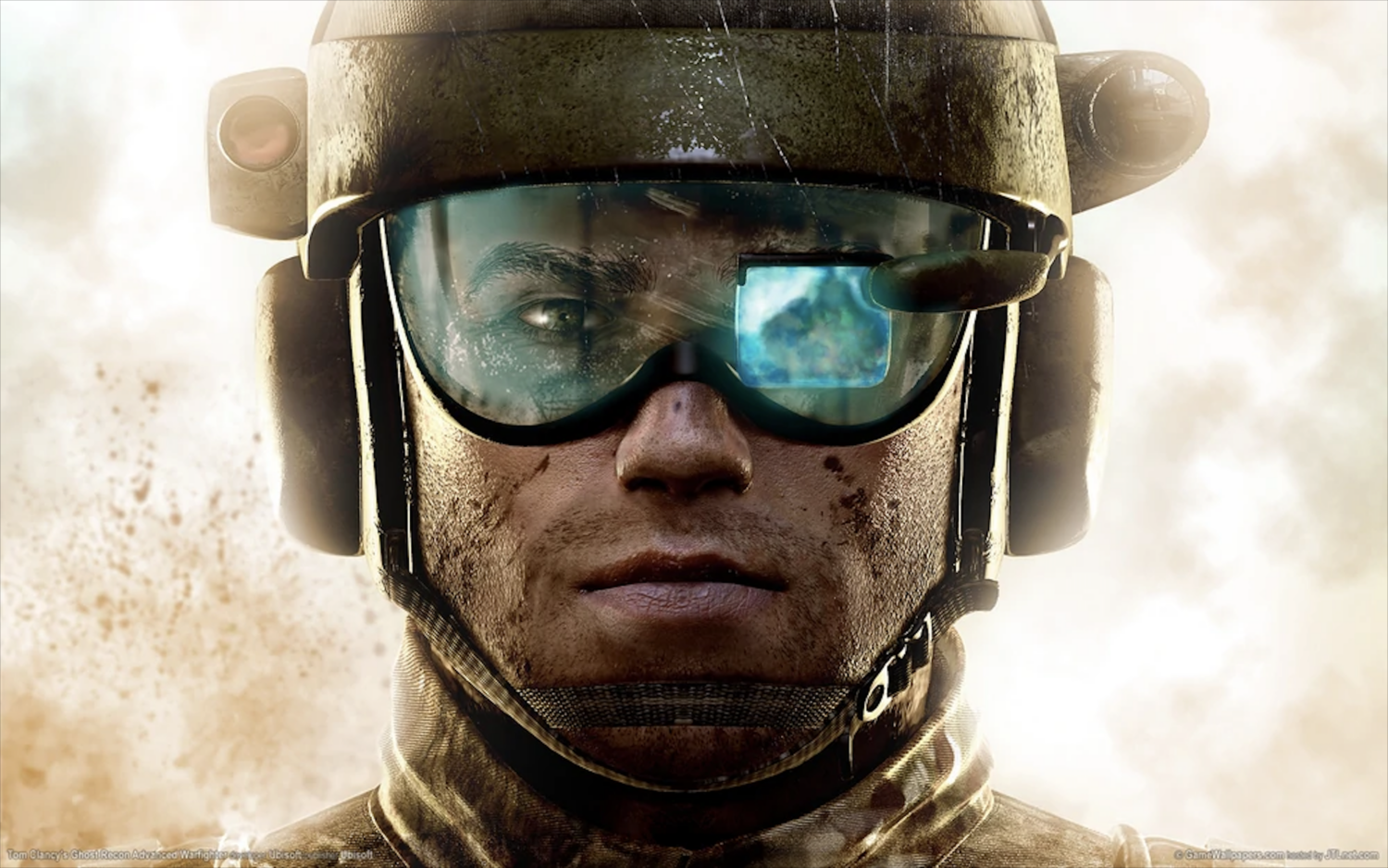
Photo by Ubisoft.
Just like the fictional Ghost Recon, the remote eye display imager has a slight issue. The monocle acts like a mini monitor. You can display images but the fact the eyepiece is transparent, the light leaks out the front, somewhat like the PVS-21. Without the light-blocking plate, you will give away your position in the dark.
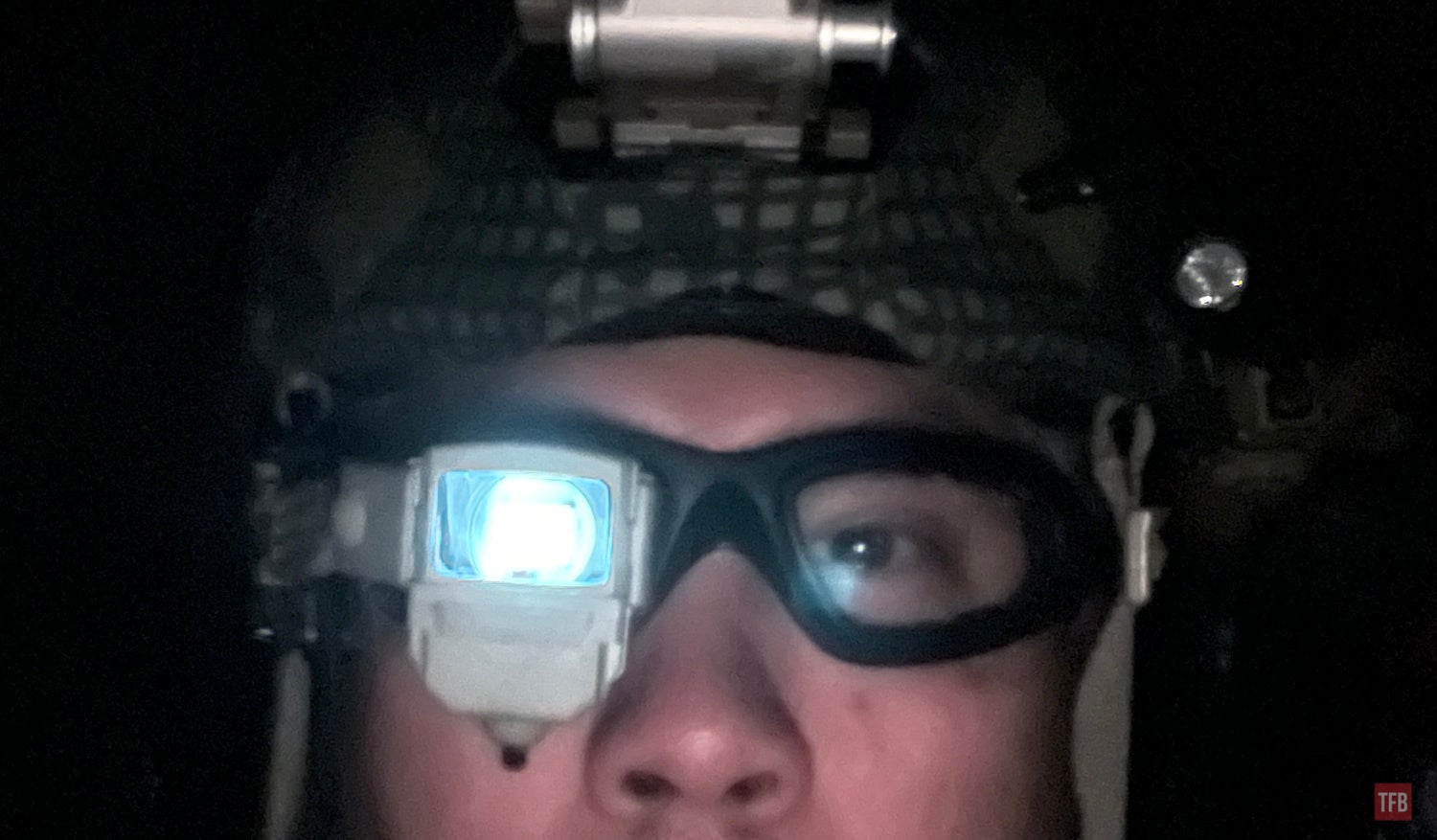
Well remote viewing a thermal is quaint but I wanted to see what else I could do with the BAE RED-I. So I bridged my MUM-14 and BAE SkeetirL. Plugged the RED-I into the Skeetir and turned it on.

To my surprise, the remote eye display imager fits behind a night vision device like a PVS-14.

You can see there is plenty of space between the MUM-14 eyepiece and head-mounted display.
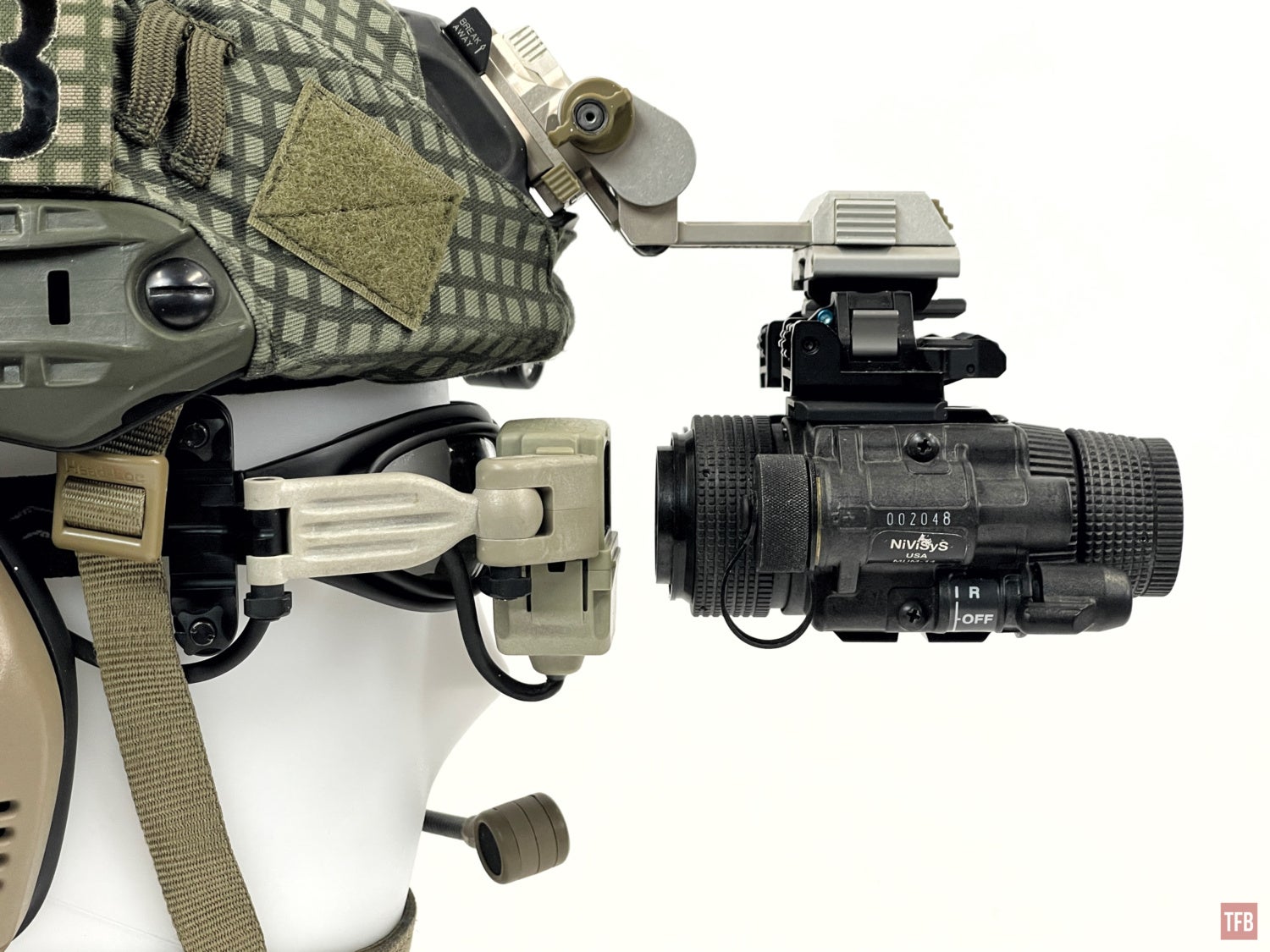
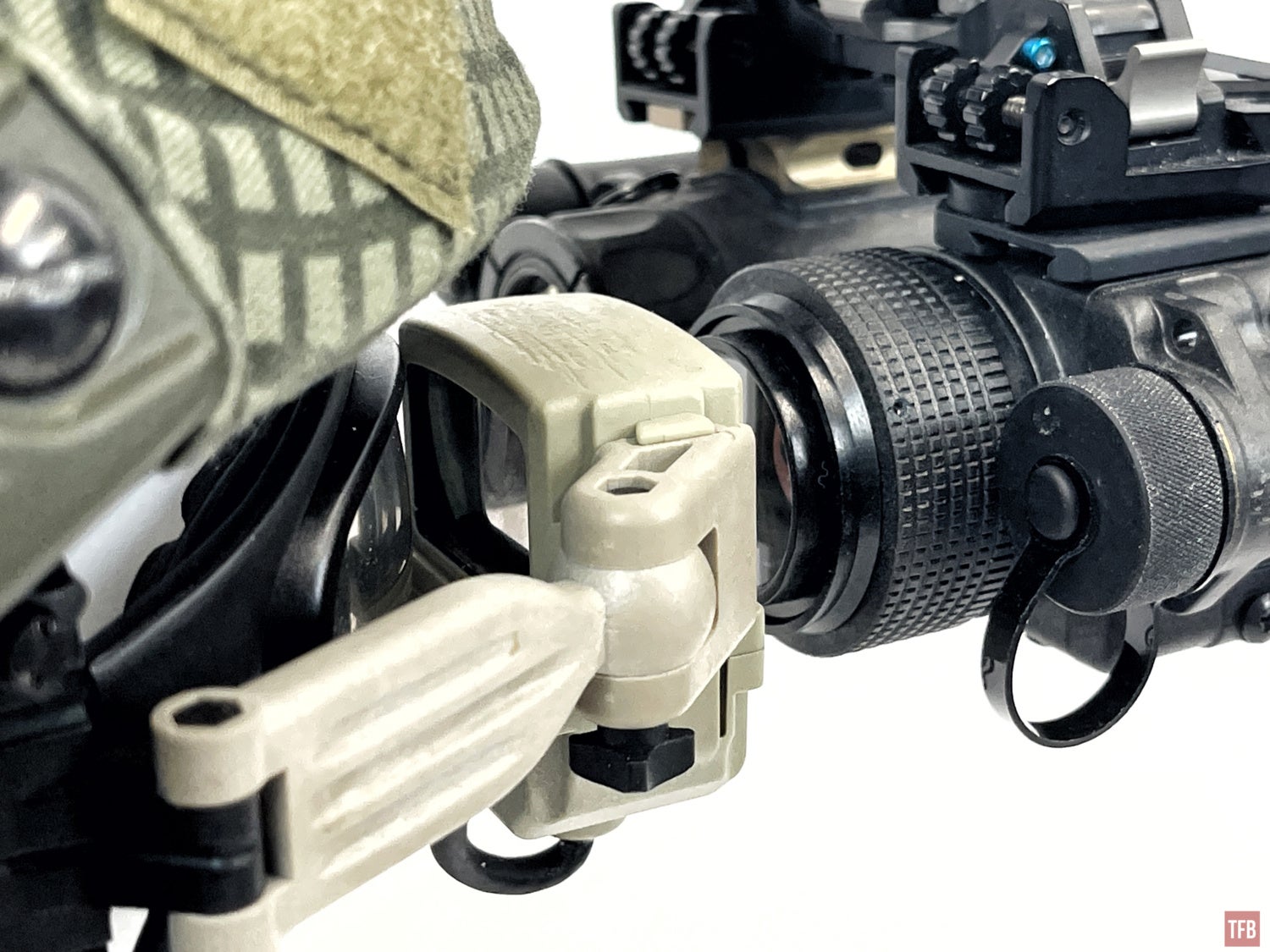
This worked and yet at the same time did not work well. The Skeetir is normally situated on top of a gun. But when you bridge it with another night vision device it is inverted. The Skeetir automatically rotates the image internally as well as the menus. However, for some reason, the RED-I display will not rotate the thermal image upside down. Why is this important? With the Skeetir inverted, the thermal image is also upside down.
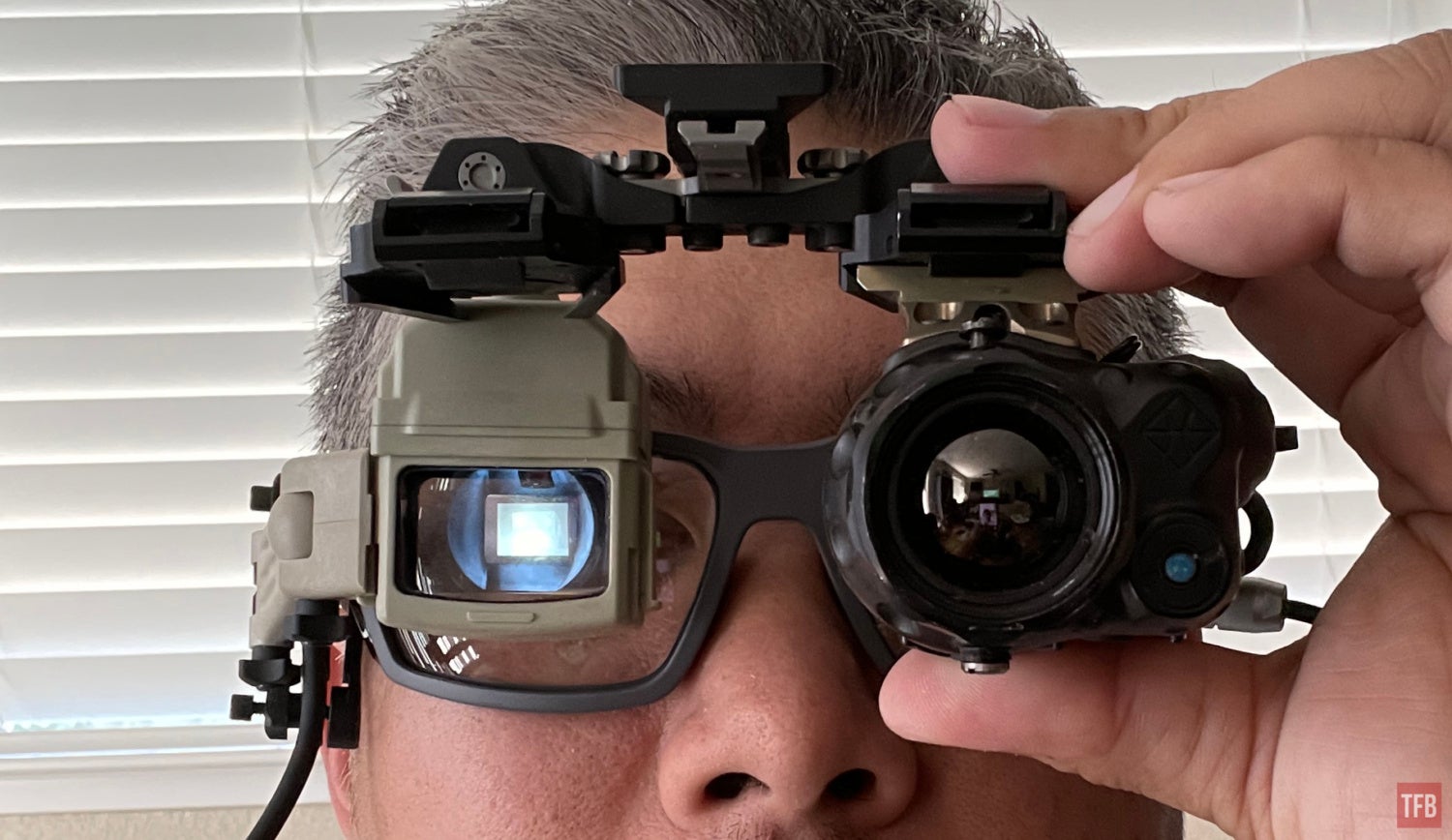
So in order for me to use the RED-I with a bridged and inverted SkeetirL, I too have to invert the remote eye display imager.
I was curious if the RED-I could work with panoramic quad tube night vision goggles. I tried it with my Chimera-10 goggles. Just like the MUM-14, the ANVIS-10 has long eye relief making it fit with a RED-I over an eye.
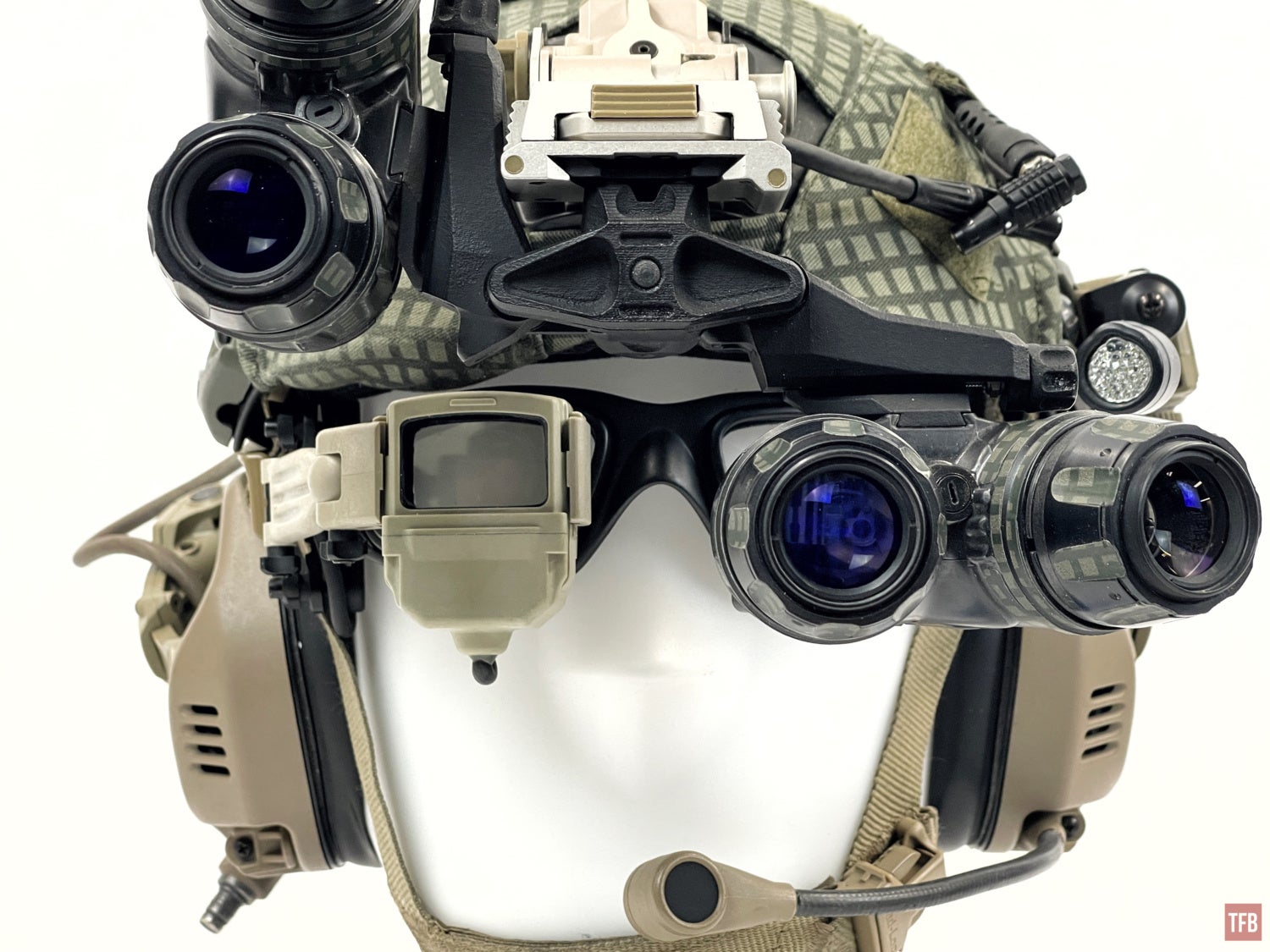
Images provided by Stanley.
Due to the mounting arm design, it blocks my peripheral vision of the eye that is using the RED-I. Making it impossible to use the outer tube of the ANVIS-10.


Final Thoughts On The BAE Systems RED-I
The concept is alluring, to be able to remotely view a thermal device. The RED-I is a very simple system. It is a glorified tiny screen that fits over your eye and it displays analog video signals with cables. That being said, you can input any images you want as long as you have a way to output analog video through an RCA or BNC cable. But how useable is it? The remote viewing of the thermal on a gun certainly takes getting used to. It is a little distracting and disorienting trying to point the thermal in the direction you want to look at the thing you want to see. I feel disconnected from the thermal. As opposed to looking through a dedicated thermal device on a gun, it is more natural to point a device while looking through it when you are shouldering the gun.
The light-blocking cover plate helps to not only block the reflected light from leaking out the front but it also keeps outside light from leaking in. Without the cover plate and at full screen brightness, it was very difficult to see any images in the day time when I was outside. Another problem is the two different images my eye is getting. I can see through the projected image to see my natural surroundings or I look at the image in the display. This can be a bit annoying so I often found myself cranking up the brightness to drown out the influx of visual data I cannot process fast enough. I am talking about the transparent display. I never found a happy brightness setting that allowed me to see past the remote eye display clearly while still being able to clearly see the projected image in the display. This is why I think transparent computer monitors or TV in sci-fi movies are dumb. The see-through HUD display also shows light if you use it at night so you need to keep it covered up which makes passive aiming difficult. So either wear it over your non-dominant eye or swing the display out of the way.
One aspect of the RED-I that could be useful is a cheaper version of the DVE system. I could mount a thermal device to the roof of my vehicle, run a cable down through my window and use the RED-I to see thermal while still inside the vehicle. Thermal cannot see through glass so this is the next best way.
How can you get one? Good luck. According to some news websites, BAE Systems won a contract for 3,000 units over a decade ago. That does not seem like a lot and the last place that had one for sale was Willsoptics.com and they were asking almost $3,000.
 Your Privacy Choices
Your Privacy Choices
